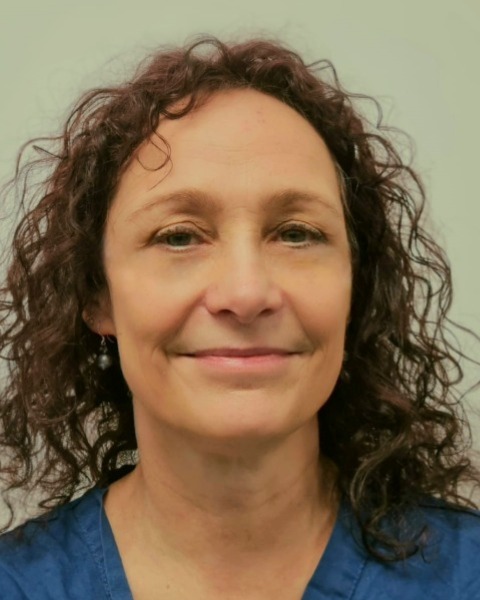Rapid Fire Abstracts
Assessment of the fetal ventriculoarterial connections by motion-corrected Doppler ultrasound-gated time-resolved isotropic 3D CMR imaging: comparison with postnatal echocardiography. (RF_FR_315)
- DL
- TW
Tomas Woodgate, MBBS iBSc
Clinical Research Fellow
King's College London, United Kingdom - RF
Rachael Franklin, MSc
MR Physicist
Guy's and St Thomas' NHS Foundation Trust, United Kingdom - AB
Arnaud Boutillon, PhD, MSc
Research Associate in Perinatal Imaging
King's College London, United Kingdom - NC
Naomi Clarke, N/A
Software Developer
King's College London, United Kingdom 
Wendy Norman, DCR(R), DRI
Senior Research MRI Radiographer, Early Life Imaging
Department of Early Life Imaging, Kings College London University, United Kingdom- JS
Johannes K. Steinweg, MD
Clinical Research Fellow
King's College London, United Kingdom - AS
Alina Schneider, MSc
PhD Student
King's College London, United Kingdom - TD
Thomas Day, MD, PhD
Clinical Research Fellow
King's College London, United Kingdom - OM
Owen Miller
Consultant in Paediatric and Fetal Cardiology
Evelina London Children’s Hospital, United Kingdom - JS
John Simpson, MD
Professor of Paediatric and Fetal Cardiology
Evelina London Children’s Hospital, United Kingdom - TV
Trisha Vigneswaran, MD
Consultant Paediatric Cardiologist
Evelina London Children’s Hospital, United Kingdom - VZ
Vita Zidere
Consultant Paediatric Cardiologist
Evelina London Children’s Hospital, United Kingdom - AU
Alena Uus, PhD
Research Associate
King's College London, United Kingdom - JH
Jana Hutter, PhD
Senior Lecturer
King's College London, United Kingdom - AP
Anthony N. Price, PhD
Senior Research Fellow
King's College London, United Kingdom - JH
Joseph V. Hajnal, PhD
Professor of Imaging Science
King's College London, United Kingdom - MD
Maria Deprez, PhD
Senior Lecturer in Medical Imaging
King's College London, United Kingdom 
Kuberan Pushparajah, MD, BMBS, BMedSc
Paediatric cardiology consultant
Evelina London Children’s Hospital/ King's College London, United Kingdom
David F. A Lloyd, MD, PhD
Consultant in Fetal Cardiology
King's College London, United Kingdom
Presenting Author(s)
Primary Author(s)
Co-Author(s)
A three-dimensional understanding of the fetal intracardiac anatomy is critical to inform antenatal counselling and postnatal surgical planning, particularly where there is an abnormal relationship between the ventricles and the great arteries. Echocardiographic methods can be limited by fetal lie, maternal body habitus, and acoustic shadowing, particularly at late gestation. Motion-corrected slice-to-volume registration (SVR) applied to T2-weighted ‘black-blood’ imaging has been shown to be a highly reliable means of visualising the extracardiac vascular anatomy in clinical practice. Similar methods have been used to generate time-resolved imaging of the fetal heart using real-time cine data, however these have relied on image-based gating techniques, which are time and resource intensive, and the clinical utility of these sequences has not been established. In this study we have applied motion-corrected SVR to overlapping Doppler ultrasound (DUS)-gated cine stacks. The findings from the prenatal datasets are compared to neonatal echocardiography.
Methods:
Consecutive fetal cases where the ventriculoarterial connections were important for postnatal management were included. Patients were scanned on a 1.5T MAGNETOM Sola scanner (Siemens Healthcare, Erlangen, Germany). Eight to ten overlapping multiplanar bSSFP DUS-gated (Smart-sync, Northh Medical, Hamburg, Germany) cine stacks were acquired (TE/TR = 1.93/56.3ms, 1x1mm in-plane/6mm slice resolution, flip angle 60°, acceleration factor 3, 20 frames). Stacks were reconstructed into isotropic time-resolved 3D datasets by applying SVR to each frame.
Datasets were inspected using multiplanar reformat software to assess the ventriculoarterial connections in 3D. Demonstrative images from fetal CMR were obtained at the time of clinical reporting and archived during the pregnancy. Following delivery, postnatal echocardiography was used to assess the ventriculoarterial connections, and stills from this modality were obtained and compared to those from fetal CMR.
Results:
Four patients were identified, with scans performed between 32+0 – 32+5 weeks gestation. Input data were acquired in around 15 minutes and reconstructions were created in approximately 60 minutes per case. Output volumes were reconstructed with a resolution of 1mm isotropic and 20 temporal frames. The relationship of the great vessels to the ventricular chambers, alongside the relative sizes of cardiac structures could be appreciated in each of the four cases. Smaller dynamic structures, such as valve leaflets and smaller papillary muscles were not well visualised on fetal CMR. There was good agreement between the fetal CMR findings and postnatal echocardiographic findings with respect to the ventriculoarterial connections (Figure 1).
Conclusion:
Motion-corrected SVR with DUS-gated fetal whole heart imaging is feasible and enables accurate 3D visualisation of the ventriculoarterial connections in the third trimester. This method may be a useful adjunct to fetal echocardiography in cases where the ventriculoarterial relationships are important for postnatal planning. Future work should focus on reducing reconstruction times, structural and volumetric validation experiments, assessment of reliability, and application of the technique to a wide range of congenital heart disease.
Figure 1..jpg)

